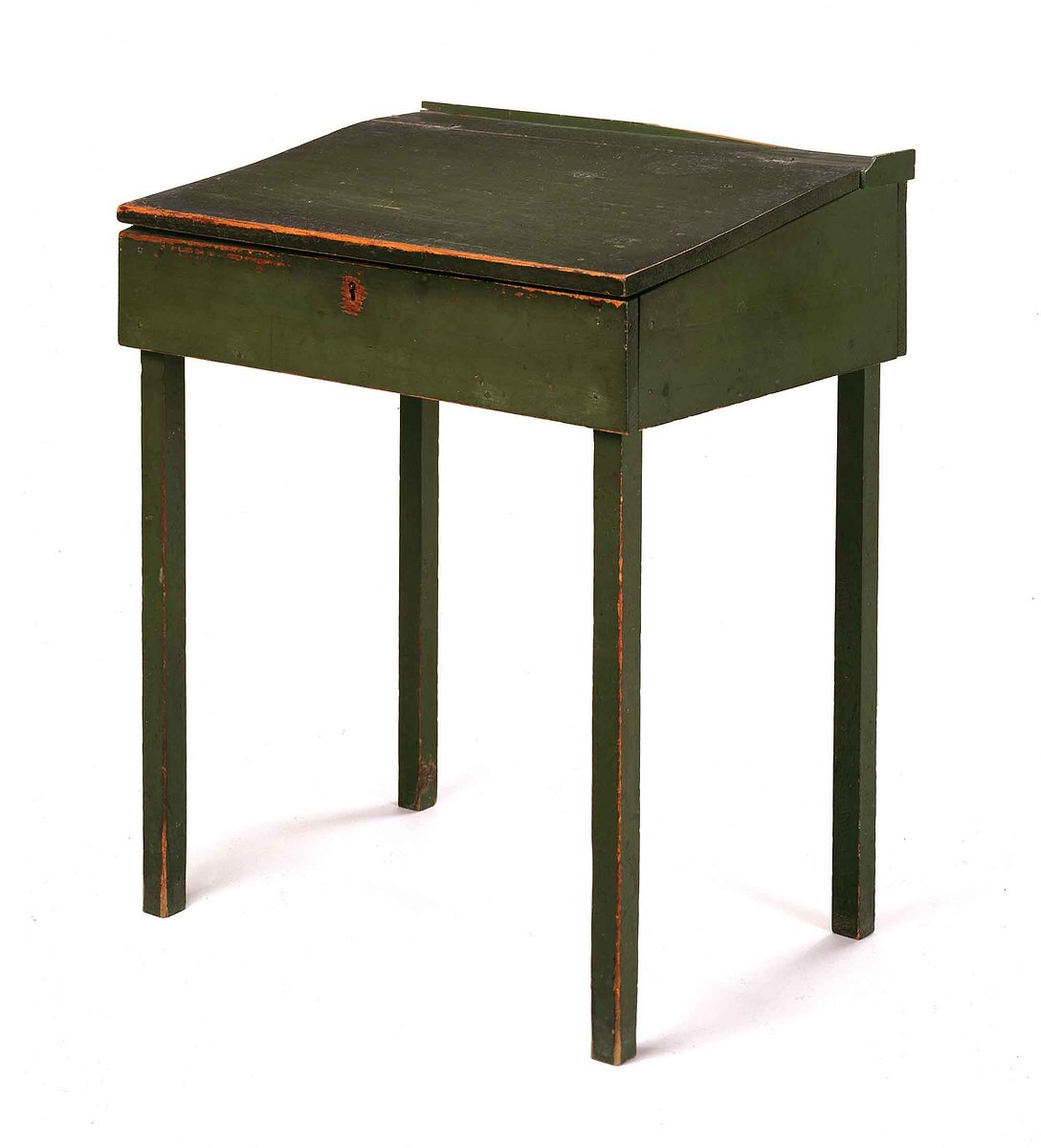A simple green desk made in Concord, Massachusetts, in about 1838 by a cabinet-maker who charged perhaps one dollar for it, had a career in America’s intellectual history entirely out of proportion to its humble origin, because it was Henry Thoreau’s desk. Since it entered the Concord Museum collection, the desk has become a cornerstone of the Museum and a treasured American icon.
Henry Thoreau is best known as the author of Walden, universally acknowledged to be one of the great books of American literature, and of “Civil Disobedience,” one of the most influential essays in the worldwide democratic tradition. Both were written at this desk.

Henry D. Thoreau, 1862
Henry Thoreau used this desk as schoolmaster. Shortly after graduating from Harvard in 1837, Thoreau began to teach school in Concord, first at the Central School and then in a school he set up with his brother John in the fall of 1838. This desk has an inscription on the inside of the backboard that reads “Summer of 1838.” For two years, John and Henry taught up to twenty students at a time, first at the Thoreau home (known as the Parkman House, after an earlier owner), where some of the students boarded. Later the school was conducted at the former Concord Academy building. The Thoreau school, which was called the Concord Academy (it was neither the first nor the last school of that name), was successful. Frank Sanborn, a friend of Thoreau’s and his second biographer, wrote of the school: “There every green desk was soon filled with pupils.”
John Thoreau’s failing health made it impossible for him to continue to teach past the 1840 academic year, and in 1842, he died. It was in part to write a book in tribute to his brother that Henry Thoreau went to live at Walden Pond in 1845, in a house he built himself on land owned by his friend Ralph Waldo Emerson. He had this desk with him at Walden, as well as a bedstead and chair also in the Concord Museum collection.
Thoreau took this desk with him to the Emerson house, where he stayed for a while after leaving Walden. Thoreau wrote to Emerson in 1847: “I sit before my green desk, in the chamber at the head of the stairs, and attend to my thinking….”
Thoreau was also attending to his writing. “Lectures begin to multiply on my desk,” he wrote to Emerson in 1848. For the rest of his life, Thoreau maintained as regular a regimen of walking outdoors and reading and writing at home as he could. The majority of Thoreau’s writing – a draft of A Week on the Concord and Merrimack, the multiple drafts of Walden, the thousands of pages of the journal, inspirational letters to Harrison Gray Otis Blake, wearisome letters to book publishers, as well as lectures, magazine articles, and graphite invoices – was done at this desk.

